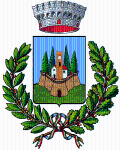Descrizione
Quello di Fontalpino è probabilmente uno dei siti archeologici più significativi dell’intera Berardenga, come buona parte delle aree prossime a Montaperti e Dofana, in questo caso con peculiarità.
I numerosi ed importanti reperti, quali pietre, scarti di fusione, ceramica,numismatici, cocciopesto, ritrovati nelle nove differenti zone di cui si compone l'area archeologica, peraltro molto estesa, ha consentito una interpretazione di straordinaria importanza. Si tratta di un complesso composto da una pars urbana (Villa Romana) con residenza padronale dotata di mensa, cucina e terme poste sul lato nord ed una pars rustica posta a sud. La frequentazione inizia nel I sec a. C. e termina verso la metà del VI, inizi VII secolo d.C. Dovendo isolare i periodi è probabile che la vita effettiva della Villa non abbia scavalcato il V sec. con le terme già dismesse in precedenza. L' ambiente ( ridotto rispetto all'originale) mostra segni di utilizzo altomedievale e alcuni frammenti sono compatibili con uno sfruttamento di epoca successiva (XIV/XV sec) in direzione O-SO è stata rilevata una piccola Necropoli di generica età romana, mentre a distanza direzione nord una piccola concentrazione di reperti litici, composti da strumenti e schegge indicano un probabile insediamento umano del Paleolitico Inferiore.
Quest’area con la strada comunale e quelle secondarie tracciate ai lati, sono una stratificazione paesaggistica, le distanze costanti, secondo le unità di misura romane (actus),confermano trattarsi di un tratto superstite della maglia centuriata intorno a Siena ( I secolo d. C.)
Fonte al Pino era già presente al catasto senese del 1320, era composto da 2 case ed inserito nella curia di S. Maria a Dofana.
English version:
Fontalpino is probably one of the most important archaeological sites in all of Berardenga territory; there are others in areas near Montaperti and Dofana, but this one is particularly interesting.
The numerous important finds, such as stones, the residue of casting processes, pottery, numismatics and cocciopesto, discovered in the nine different zones that make up the very large archaeological area, allow for extraordinarily important analysis and interpretation. This was a complex made up of a pars urbana (Roman Villa), a main residence with a dining room, kitchen and spa on the north side and a pars rustica on the south side. Occupation of the site began in the 1st century a. C. and ended around the middle of the 6th or early 7th century A.D. Isolating the various periods, it is likely that everyday life at the Villa did not continue beyond the 5th century, with the spa already dismantled earlier on. The area (smaller than originally) shows signs of early medieval utilization, and a few fragments are compatible with later use (14th/15th century). To the W/SW a small generically Roman age necropolis has been found, while a short distance to the north there was a small concentration of clay objects, including instruments and shards, indicating a probable lower Paleolithic human settlement.
This area, with the municipal road and secondary roads to the sides, is a stratification of landscapes; the regular distances in keeping with Roman units of measurement (actus) confirm that this is a surviving section of the ancient Roman network around a Siena (1st cent. A.D.)
Fonte al Pino was present in the1320 Sienese land registry; it consisted of 2 houses and was part of the curia of S. Maria a Dofana.
Modalità d'accesso
sempre aperto
Indirizzo
Punti di contatto
Ultimo aggiornamento: 4 marzo 2024, 12:53

